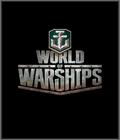If you are a fan of any form of warfare that doesn't revolve around infantry combat, you've probably heard of WarGaming and its suite of current and upcoming games. World of Tanks continues to be an enjoyable and evolving take on armored warfare, while the aerial combat of World of Warplanes has entered open beta.
At E3 2013, we checked out some recorded footage of the pre-alpha World of Warships. The take on naval combat doesn't wildly differ from that of similar games. Ships of various classes duke it out over decent-sized maps, vying to either capture a particular area on the map or wipe out the other team. There is enough similarity to make the game feel familiar, but the gameplay has significant differences.
World of Warships will feature U.S. and Japanese ships at launch, with British and German ships planned for later. Like the other games, World of Warships will feature 15-on-15 battles of various scenario types, with one person controlling each ship. Submarines will not feature in the game, as their integration was deemed too problematic to implement. It was joked that such a thing could show up as World of Submarines down the road, but it was both clearly mentioned in jest and served to further cement that World of Warships will only feature naval combat at the water's surface.
There are four featured classes of ships: aircraft carriers, battleships, cruisers and destroyers. Aircraft carriers are more of a support class, and they are best positioned well away from the fighting. Carriers can launch AI-controlled planes of various types, such as dive bombers, fighter planes and scouts. Kamikaze is not an option, as their implementation would force the game to have a higher age rating, and the trade-off didn't seem worthwhile.
Battleships and cruisers are the heavy and medium ships, respectively. These ships bring more firepower with their bigger and more numerous deck guns. Their heavier armament and thicker armor comes at the price of reduced speed and maneuverability, thus increasing your desired range from the enemy. Battleships are some of the burliest ships on the seas, but their natural counter is the nimble destroyer and its torpedoes.
Destroyers are the lightest class of ships, are lightly armored and have comparatively little in the way of deck guns. However, they are also the fastest ships and have the ability to launch torpedoes. Torpedoes are launched in groups, in a fanned arc. The size of this arc can be expanded or contracted for a better chance of hitting something or to concentrate the firepower. You can see torpedoes as they travel and can avoid them, but slower ships may find that difficult to do.
Controlling the planes is done is a style similar to RTS games, in which you select a group of planes and tell them to go to a particular area on the map. Once there, your planes engage nearby targets until they either get wiped out or run out of fuel and have to land on your ship. Carriers may have no firepower of their own, but their scouting and support abilities, when used effectively, could be a big boon to the team.
All ships are armed with some measure of flak cannons, which are controlled by the AI and automatically engage nearby enemy aircraft. Battleships, cruisers and destroyers have deck guns that can be fired in sniper mode or volley mode. Sniper mode looks very similar to World of Tanks in that you look out from your ship via a scope parallel to the ocean surface and fire shots directly at your target. Volley mode is more similar to the SPGs in World of Tanks and allows you to lob shots over longer distances and terrain obstructions. You must lead your volley of shots to hit moving ships, but with the reload time, you can fire one volley to determine range and lead time before using subsequent volleys to dial it in.
As ships take damage, their hit points are decreased, but their buoyancy also takes a hit. Ships sink once either bar is depleted, and ships that lose buoyancy become slower and more cumbersome to maneuver. Another interesting feature is that some areas of the map are considered shallow water, where the larger ships cannot enter. This serves a strategic purpose, allowing smaller ships, such as destroyers, to traverse the map while larger ships, such as battleships, must go around.
Look for more on World of Warships as it continues its development cycle.
More articles about World Of Warships











 World Of Warships is a free-to-play naval action MMO based on sea battles of the 20th century that complete the "World of" war trilogy.
World Of Warships is a free-to-play naval action MMO based on sea battles of the 20th century that complete the "World of" war trilogy.

























